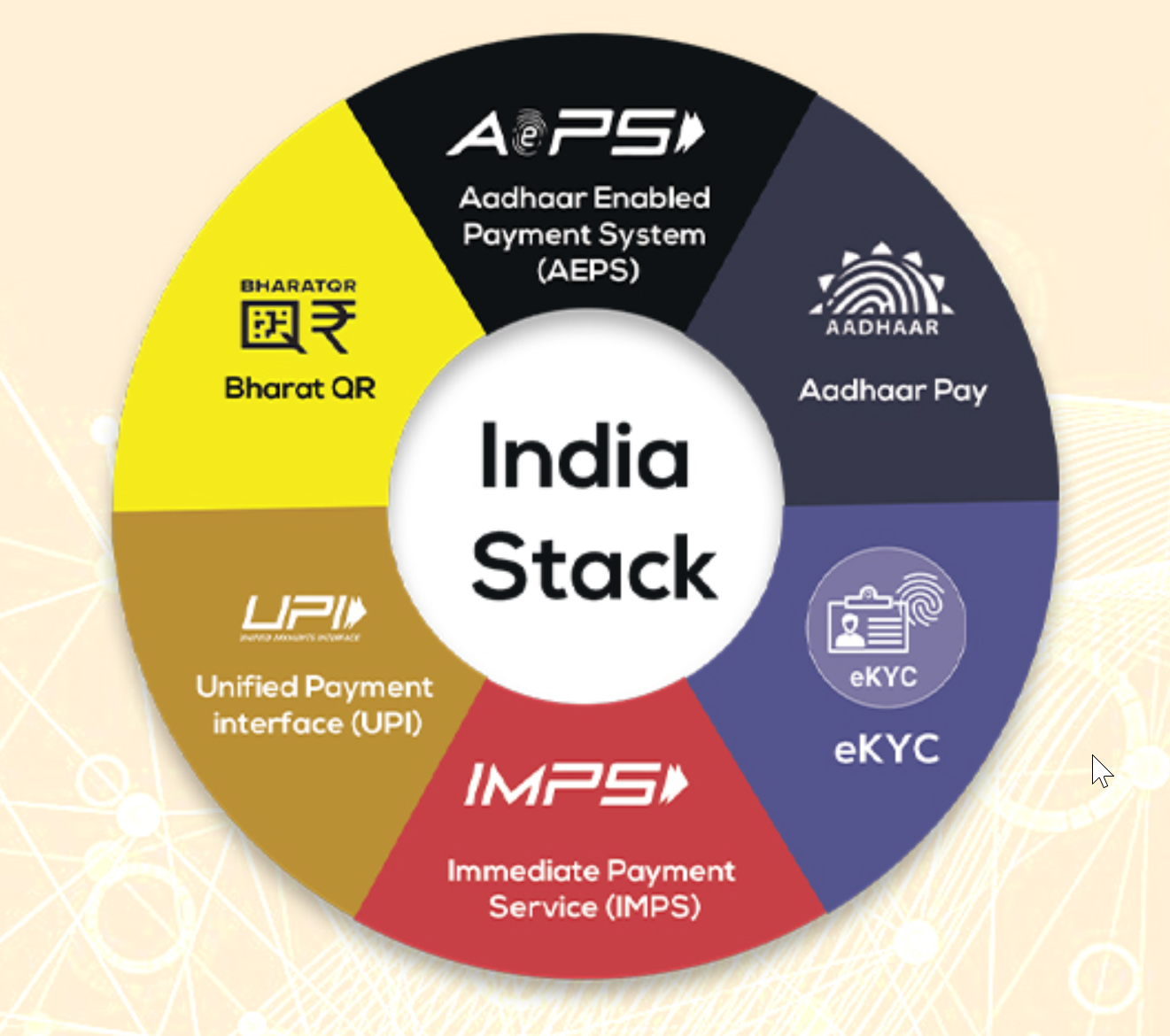India Stack
India Stack initiative integrates various technological components to create a holistic and inclusive digital infrastructure in India. Designed to simplify transactions, empower citizens, and bridge socio-economic gaps, India Stack has revolutionized how Indians interact with their government, businesses, and each other. The initiative aimed to harness the power of technology to bring services to the fingertips of every Indian, regardless of their socioeconomic background.
Components of India Stack
1. Aadhaar Identity System
At the heart of India Stack lies the Aadhaar identity system – a 12-digit unique identification number issued to every resident of India. This biometric-based system, linked to an individual’s demographic and biometric information, serves as a foundation for multiple applications across various sectors.
2. Unified Payments Interface (UPI)
UPI, a real-time payment system, enables users to send and receive money instantly using smartphones. This innovation has revolutionized digital payments in India, making peer-to-peer transactions simple, secure, and efficient. UPI has spurred the growth of mobile wallets, payment apps, and digital banking, transforming the way Indians conduct financial transactions.
3. Digital Locker (DigiLocker)
DigiLocker is a cloud-based platform that allows citizens to store, access, and share their official documents and certificates digitally. This eliminates the need for physical documents and enhances convenience in accessing government services, educational records, and more.
4. eSign
eSign facilitates legally binding digital signatures, enabling citizens to sign documents electronically, eliminating the need for physical paperwork. This has streamlined processes in sectors like finance, insurance, and government services.
5. eKYC (Know Your Customer)
eKYC utilizes Aadhaar’s biometric authentication to verify an individual’s identity for various services, reducing the time and effort required for identity verification. This has expedited processes in areas like opening bank accounts, availing loans, and obtaining SIM cards.
6. Consent Architecture
The Consent Architecture of India Stack allows individuals to control the sharing of their personal data with service providers. This feature empowers users by granting them the authority to determine who can access their information and for what purpose, ensuring privacy and security.
Impact of India Stack
1. Financial Inclusion
India Stack has played a pivotal role in advancing financial inclusion by bringing previously excluded populations into the formal financial system. The simplified digital payment methods and paperless transactions have enabled even remote and rural areas to access banking services.
2. Ease of Doing Business
For businesses, India Stack has eliminated bureaucratic hurdles by digitizing documentation processes and enabling online verification. This has reduced the time and costs associated with regulatory compliance and administrative tasks.
3. Healthcare and Welfare Schemes
India Stack has revolutionized the delivery of healthcare and welfare services. By digitizing medical records, beneficiaries of government health schemes can easily access their information and avail services. Direct benefit transfers (DBT) have also become more efficient, ensuring subsidies and benefits reach the intended recipients directly.
4. Innovation and Startups
The open architecture of India Stack has spurred innovation and the development of new applications and services. Startups have leveraged these components to create solutions that address various challenges faced by Indian society, such as education, agriculture, and healthcare.
Challenges and Concerns
While India Stack has brought about significant positive changes, it has also sparked debates regarding privacy, security, and the potential for misuse of personal data. Striking a balance between harnessing technology for societal progress and safeguarding individuals’ rights remains an ongoing challenge.
Future Prospects
The success of India Stack has inspired other countries to explore similar digital infrastructure models. As technology continues to evolve, India Stack is poised to further enhance its capabilities, ensuring that more citizens can leverage its benefits.


